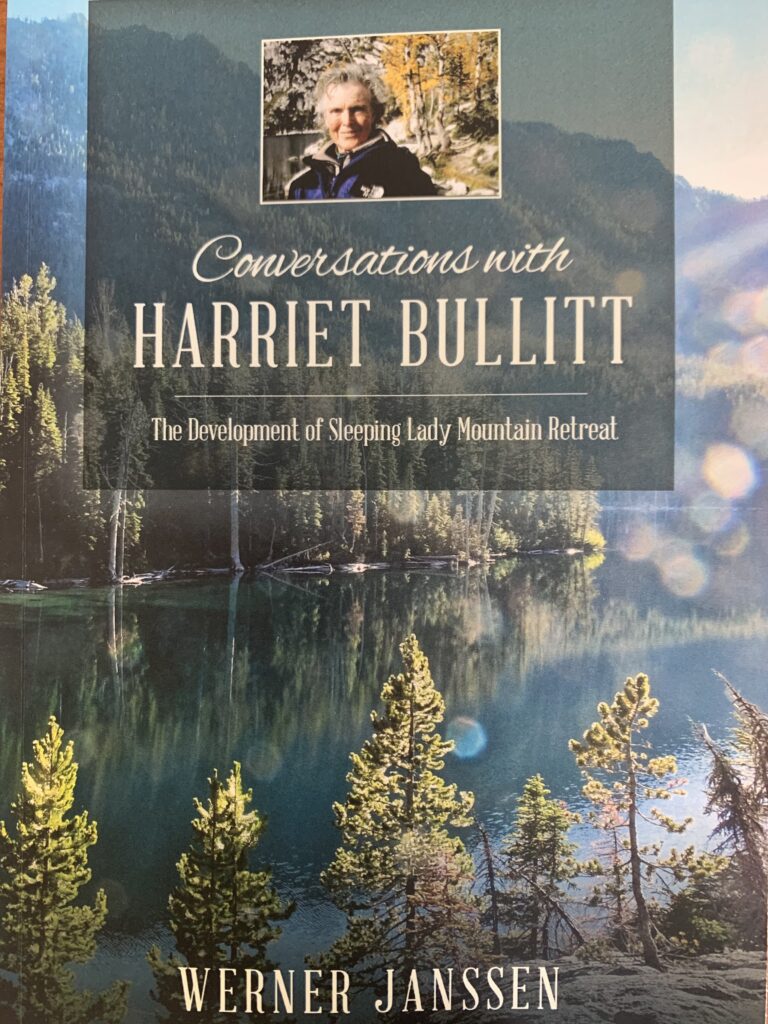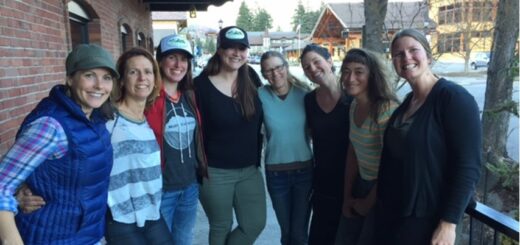Werner Janssen gives us an intimate portrait of philanthropist Harriet Bullitt
I recently finished a fascinating book about Harriet Bullitt written by former Sleeping Lady manager Werner Janssen. Conversations with Harriet Bullitt: The Development of Sleeping Lady Mountain Retreat provides a fascinating portrait of the philanthropist and the back story behind the development of Sleeping Lady.

For most folks, Harriet remains an enigma. She has quietly made enormous contributions to civic life in North Central Washington through the development of Sleeping Lady and the tens of millions of dollars of investments made by her Icicle Fund to support conservation, history and the environment.
In the book, Werner allows Harriet to tell her story in her own words. Over the years, he recorded multiple conversations probing the details of her rich and extraordinary life. So rather than telling her story from his perspective, he was able to play the role of allowing her to speak about the things she found most compelling. This gives the reader intimate, personal insights about her life and work. We learn that she wanted to study engineering at the University of Washington but it was a man’s world at the time and she was told she couldn’t use the library because she wasn’t a “serious student” like the fellows in the program.
The book highlights her mother getting involved in real estate and other endeavors after her father’s death. Dorothy Bullitt instilled in her children the importance of contributing to the greater good. She launched the KING Broadcasting empire and played a pioneering role in the emergence of television.
Harriet and her sister Patsy inherited King Broadcasting after the death of their mother and they chose to sell most of the assets, which allowed her to develop Sleeping Lady Mountain Retreat. She became what she described as a reluctant real estate developer because she believed the community would be better served if the property that had been owned by the Catholic Church could be developed with great sensitivity for the natural environment.

Werner, a former Boeing engineer who had been instrumental in developing Holden Village, was deeply involved in the development and construction of Sleeping Lady.
Werner said he “wanted to give credit to some of the contractors who were a delight to work with. I assume that very few people I the valley have ever referred to Don Bates and Bates House Moving as ‘artists,’ he told me. “I rally saw Don as one of the many artists contributing to the success of the project,” he continued.
That commitment of Werner to recognize the contributions of others and paint a fuller picture of Harriet and the development the Sleeping Lady makes this book a compelling read.
Most of all, it reminds us of the power of vision and of making contributions for the greater good. Few people have the resources to match Harriet Bullitt, but all of us can choose to bring that same spirit of contribution to the work we do in community.
For people interested in the history of the Wenatchee Valley and North Central Washington, Conversations with Harriet Bullitt is a must read. A Book for All Seasons will have copies of the book, as will the Mercantile at Sleeping Lady. Also, the North Central Regional Library will have copies.


